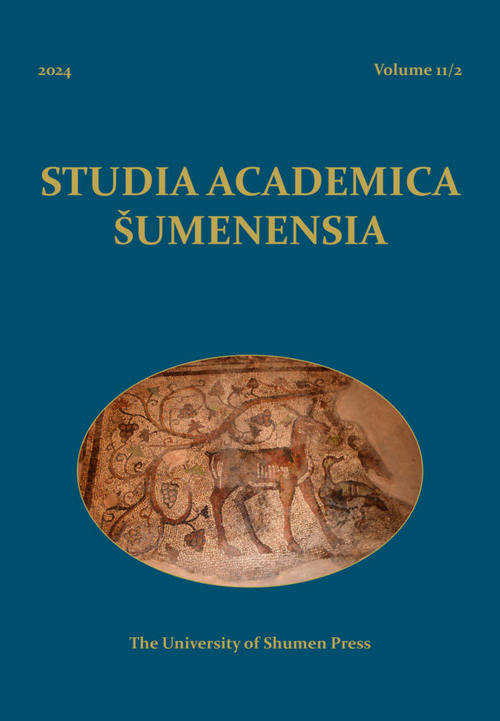Secondary tombs from the early Middle Ages in older tumuli in the Lower Danube area
Secondary tombs from the early Middle Ages in older tumuli in the Lower Danube area
Author(s): Boyan Totev, Cristina Paraschiv-Talmațchi, Tiberiu PotârnicheSubject(s): History, Archaeology, Middle Ages, 6th to 12th Centuries
Published by: Шуменски университет »Епископ Константин Преславски«
Keywords: nomadic tombs; secondary burial; aristocracy; tumulus; Bulgaria; Romania; funeral
Summary/Abstract: In this paper, the authors present three nomadic tombs, secondarily buried in older tumuli, discovered in the territories of Bulgaria and Romania, at different times. Among the analyzed monuments, the most well-known is tomb no. 5, located in the northern part of tumulus no. 3, investigated in the village of Madara (Shumen district), in northeastern Bulgaria. Another secondary tomb, situated on the southern periphery of an ancient tumulus, was discovered near the village of Zlatari (Yambol district), in southeastern Bulgaria, south of Stara Planina (Balkan Mountains) and Sredna Gora Mountains, in the gap between the Sveti Iliyski hills. The last presented tomb was found near the village of Runcu (Constanta County), in southeastern Romania, in the central part of Northern Dobrudja. Tomb M1 represents a secondary burial made near the central part of tumulus no. 15, from the Hellenistic period. Starting from the presence of a similar indicator for these burials, the belt elements, for which analogs from the Lower Danube are also presented, we assume that representatives of the nomadic aristocracy were buried in the secondary tombs. The contemporaneity of the tombs (with the exception of the tomb at Târgșor, Prahova County) and their territorial distribution may suggest a direct connection between the nomadic aristocracy and the ancient Bulgarian state. However, there is currently no information regarding a unified funerary ritual. On the contrary, the known complexes exhibit differences in essential elements such as burial orientation, types of funerary structures, rituals, funerary inventory, etc. For this reason, ethnic interpretation is currently challenging.
Journal: Studia Academica Šumenensia
- Issue Year: 11/2024
- Issue No: 2
- Page Range: 55-71
- Page Count: 17
- Language: English

